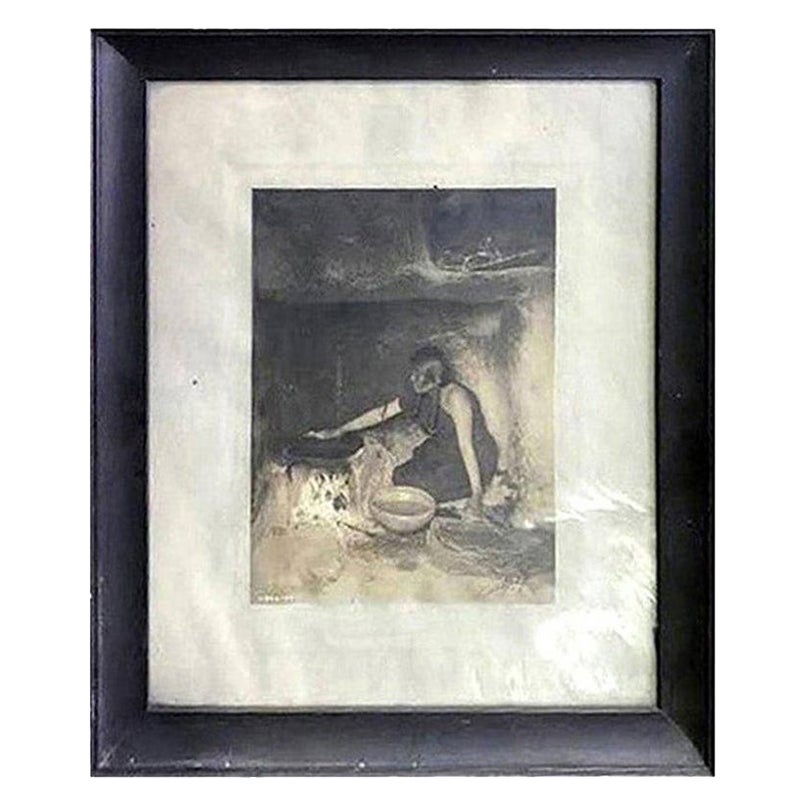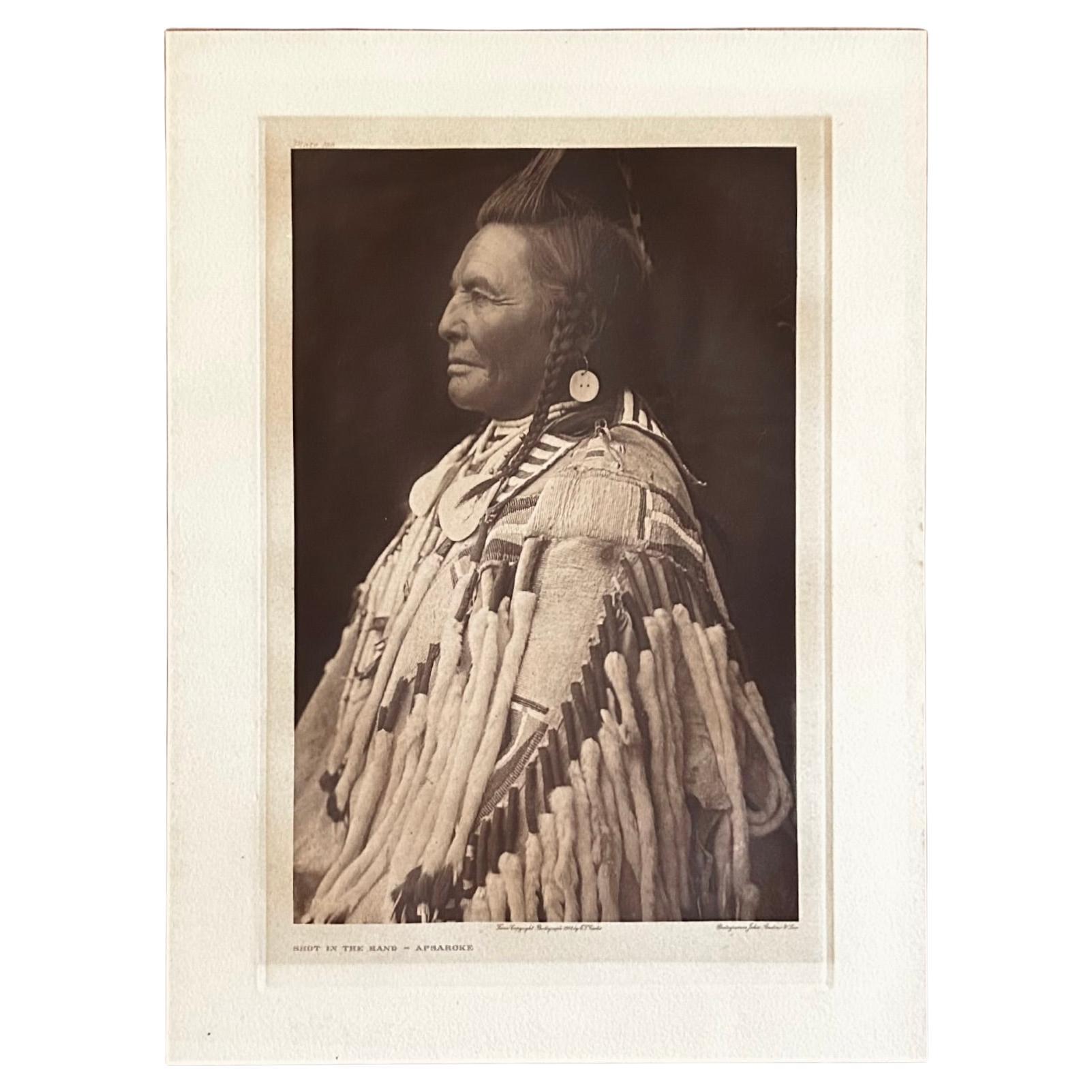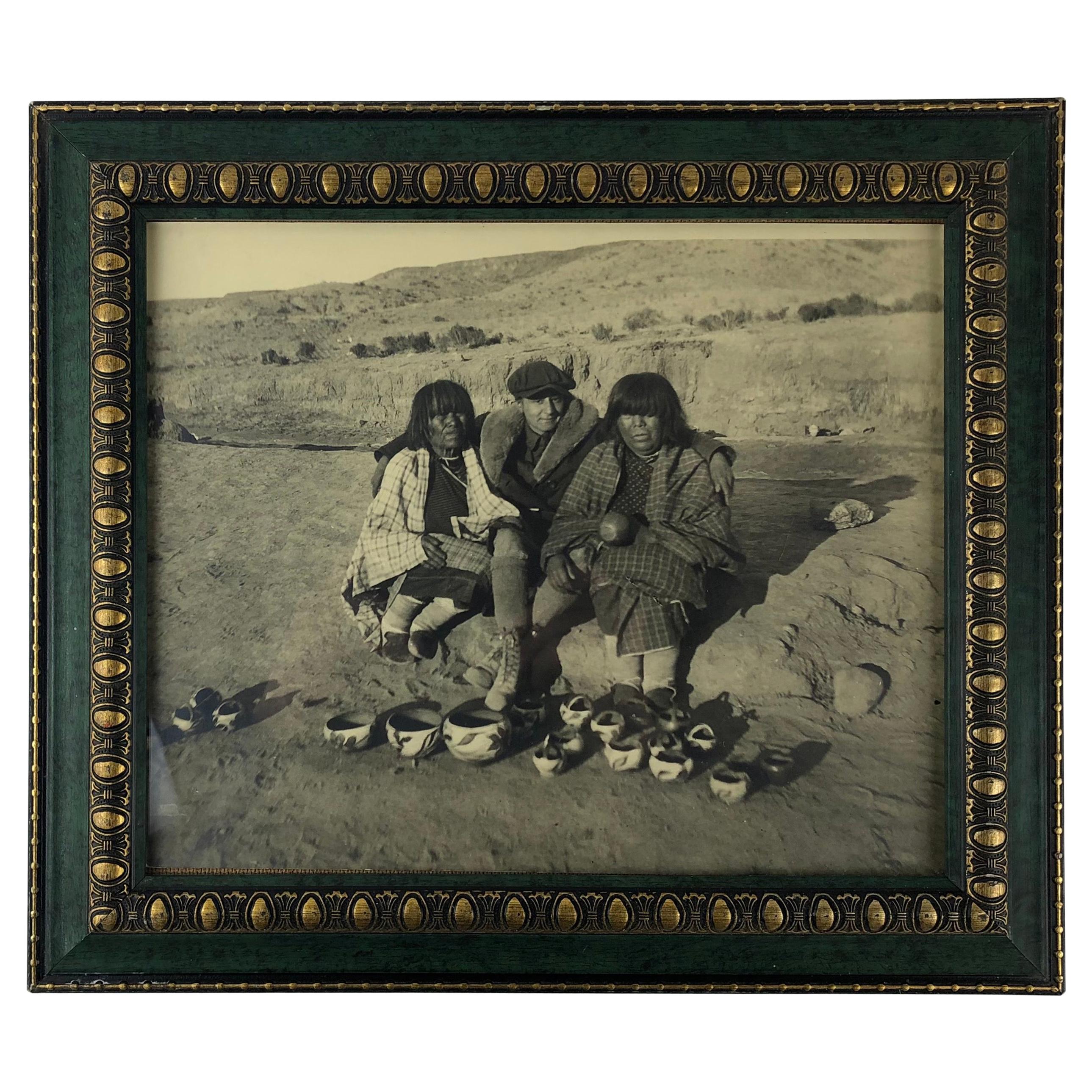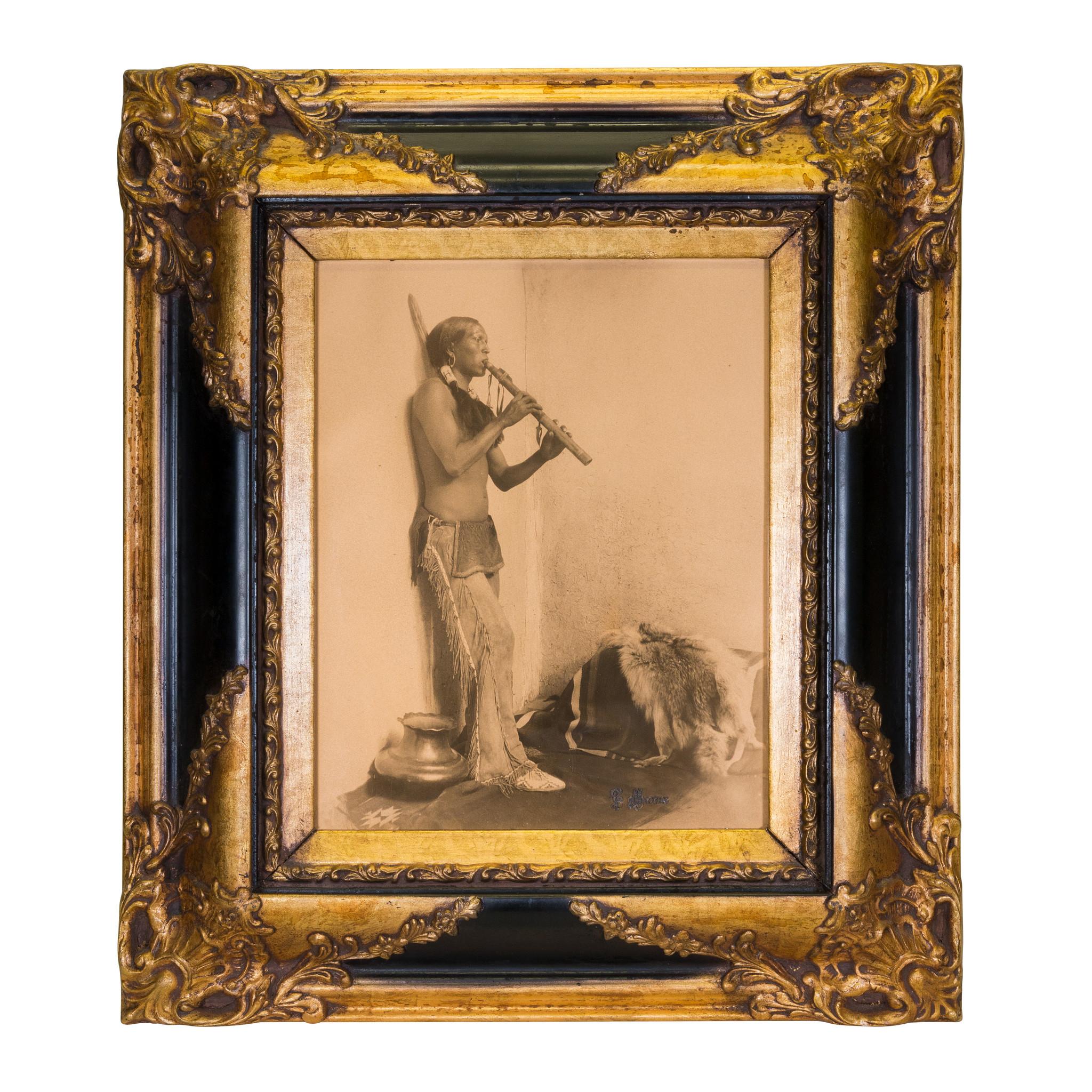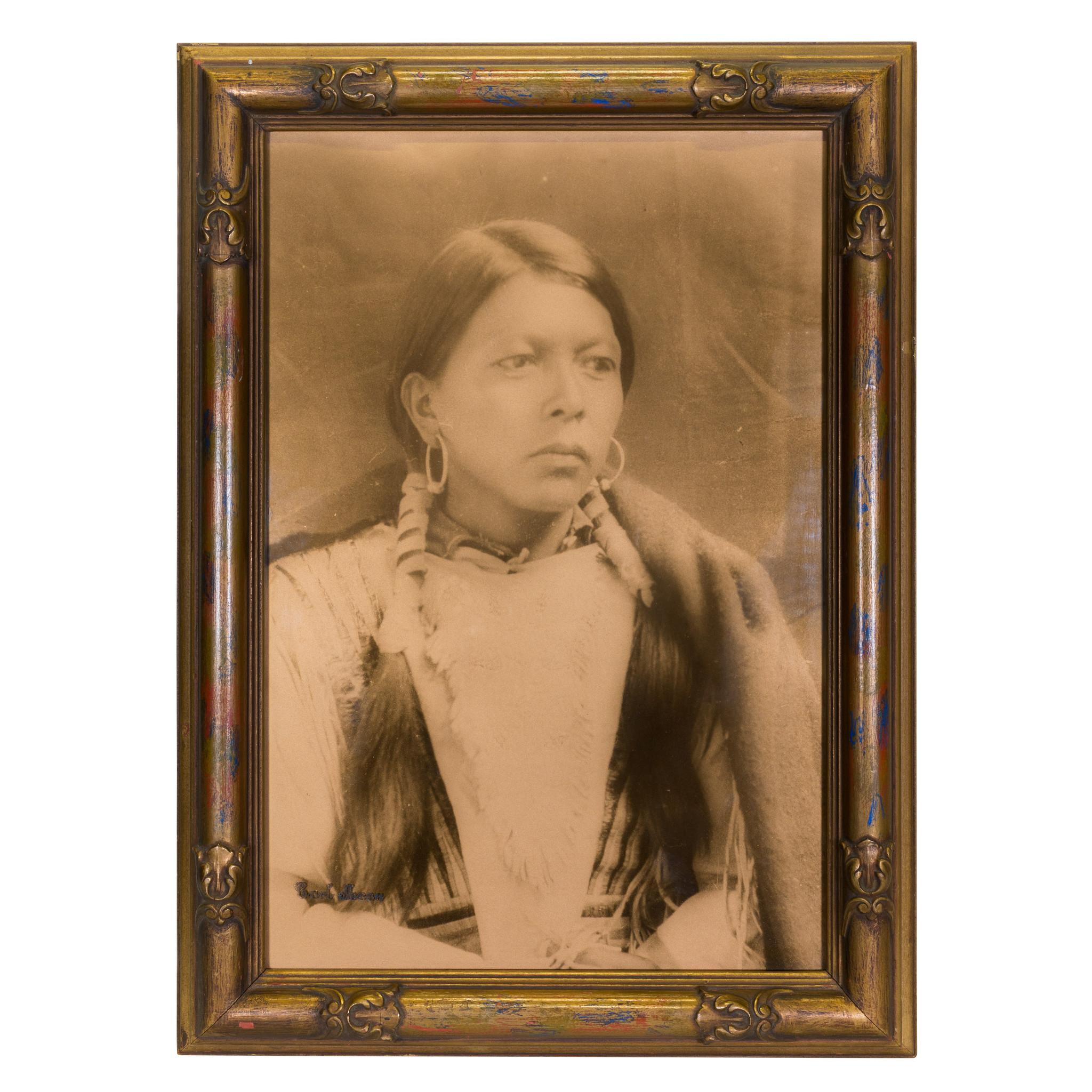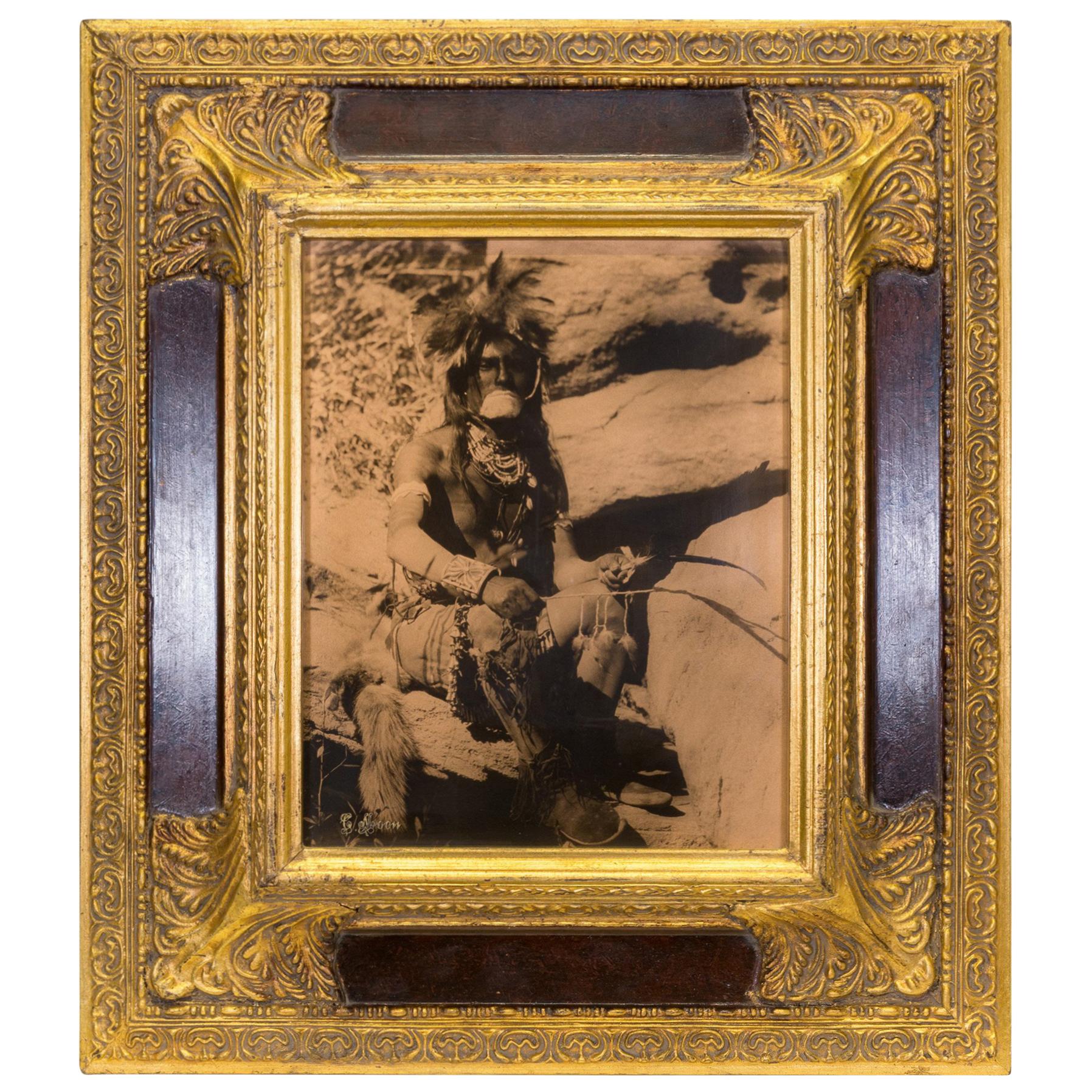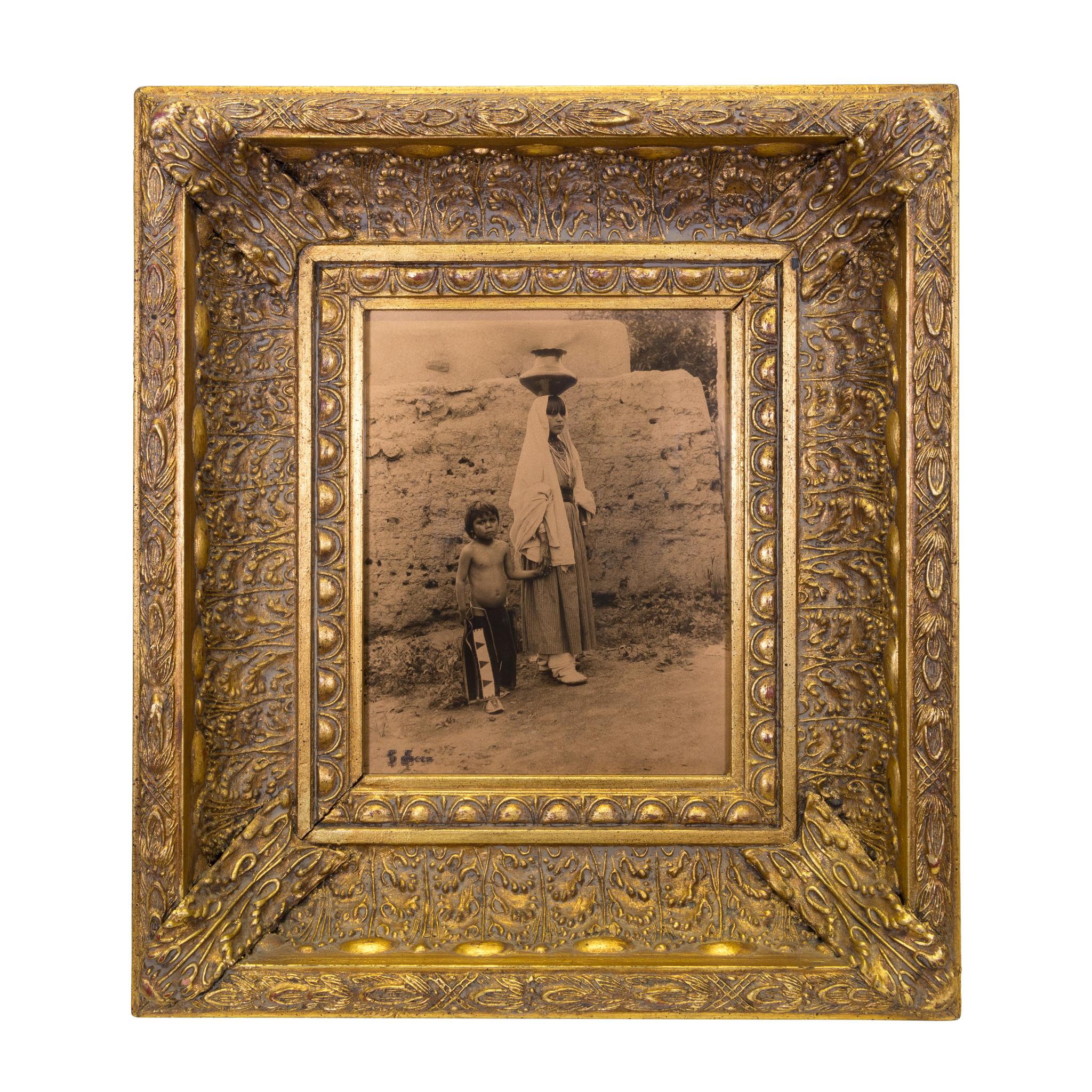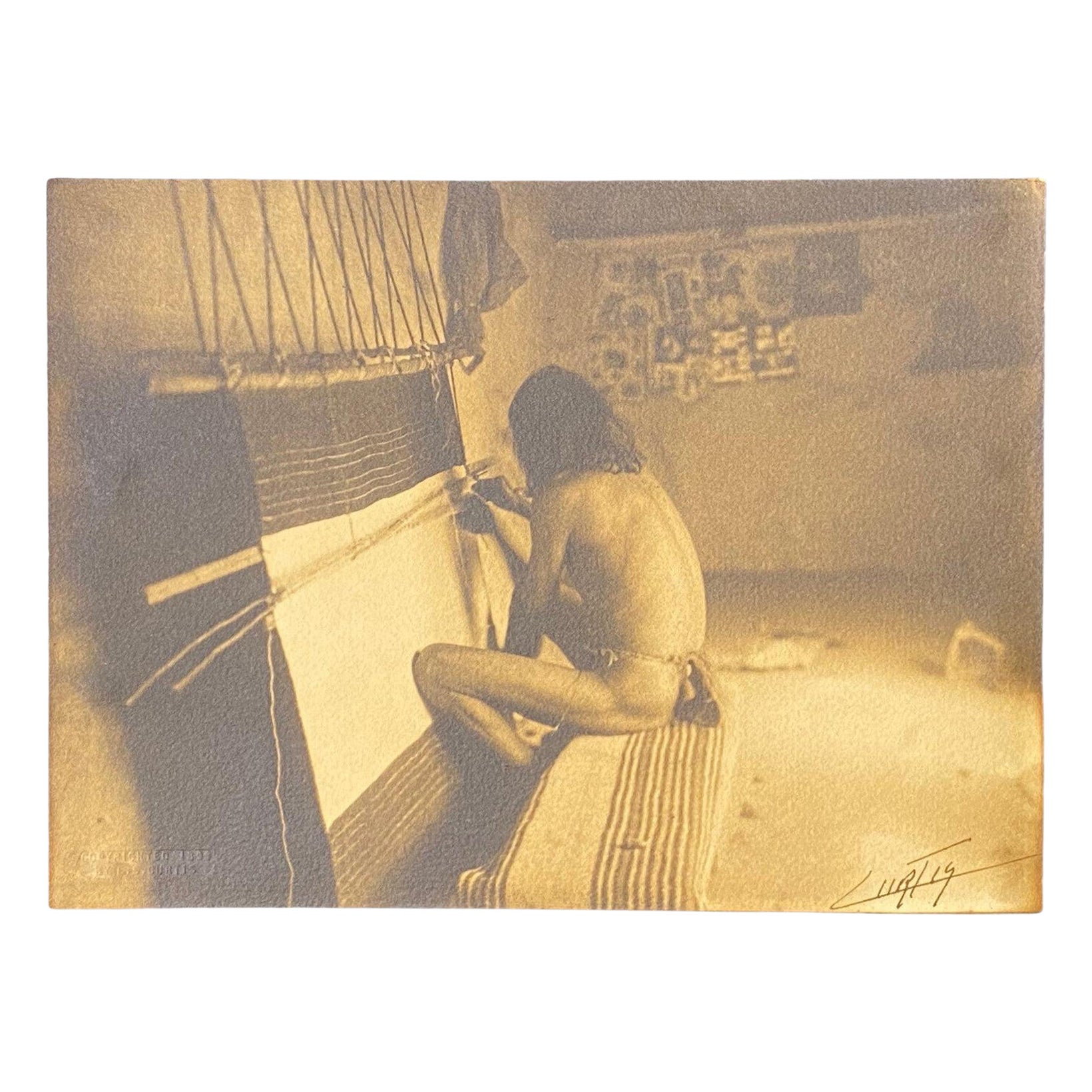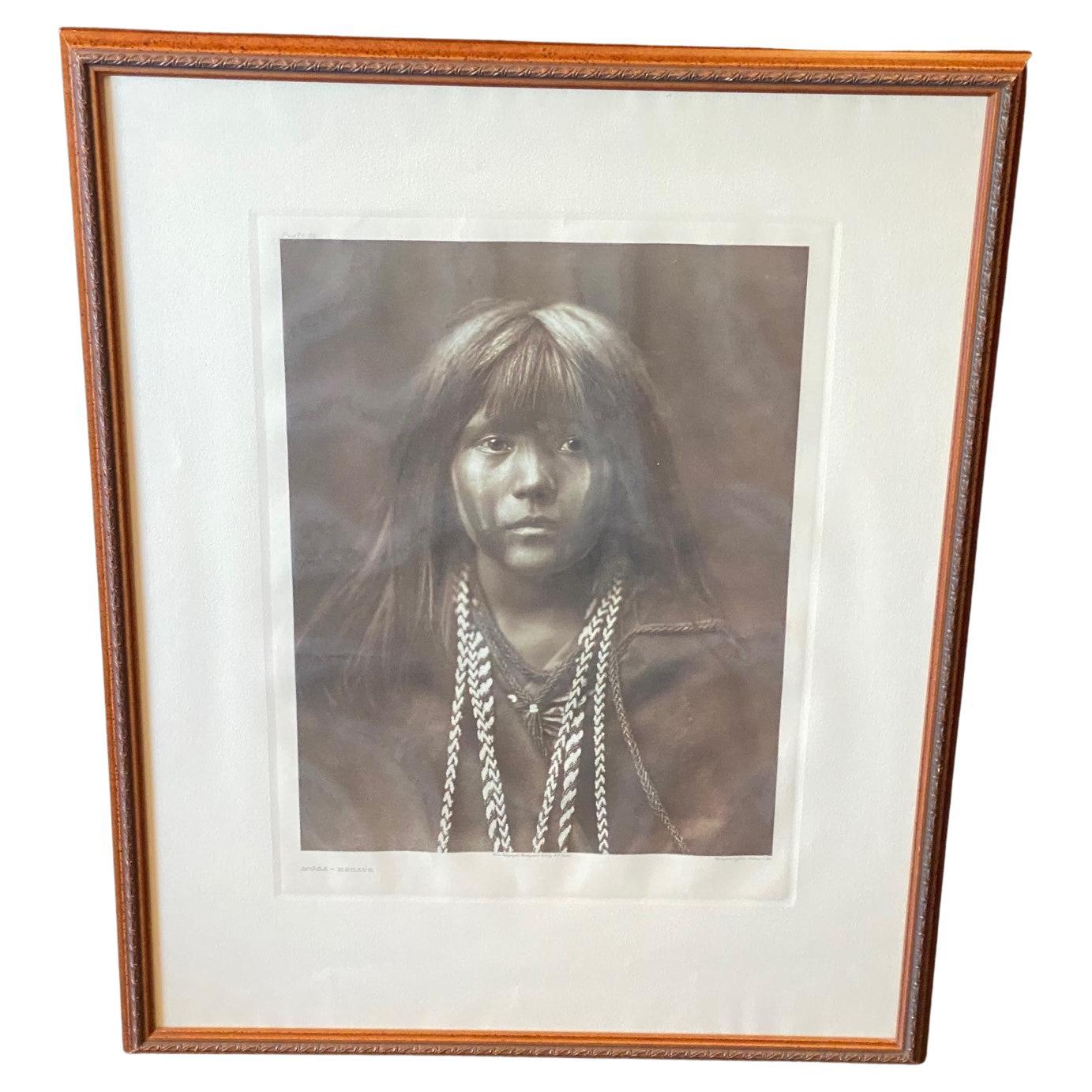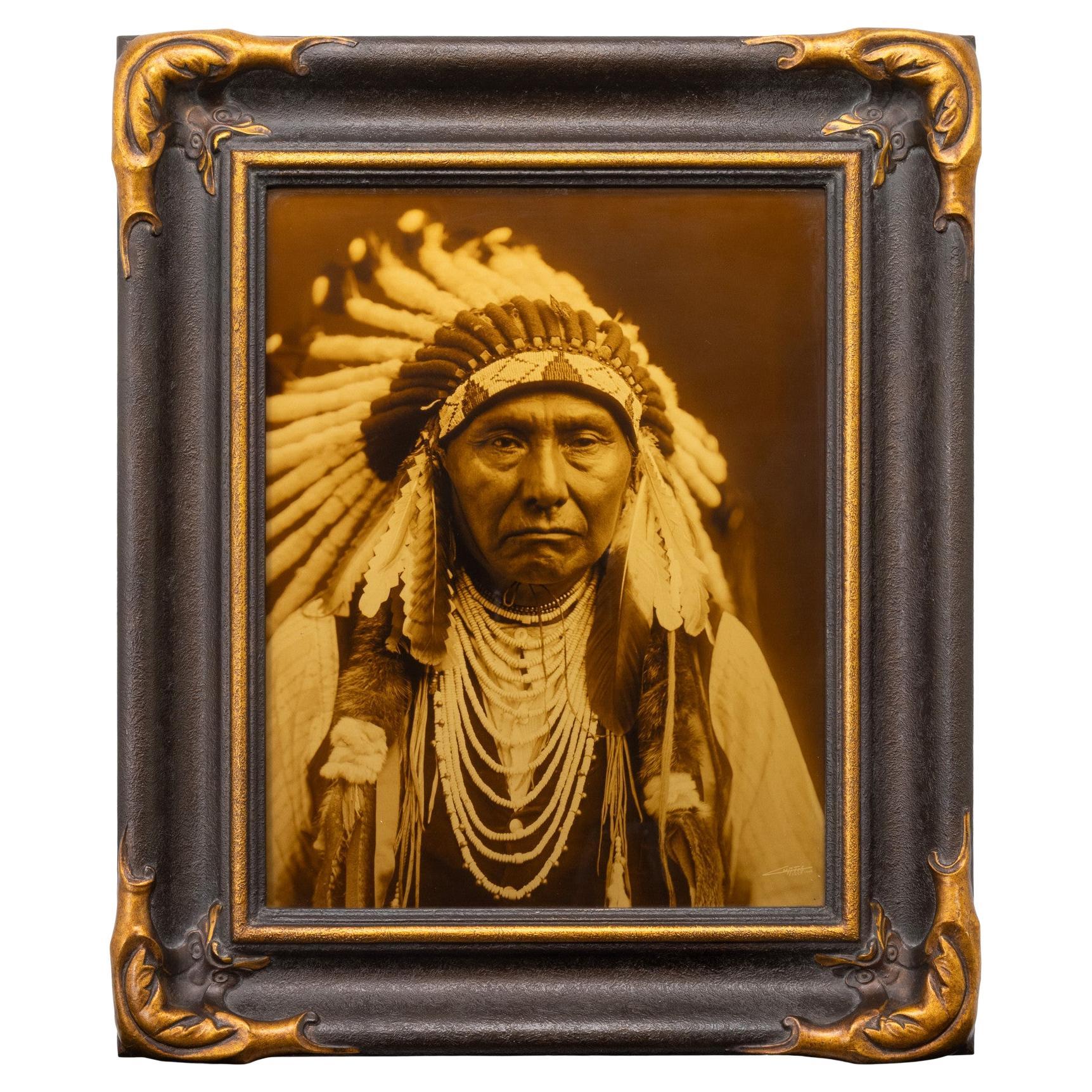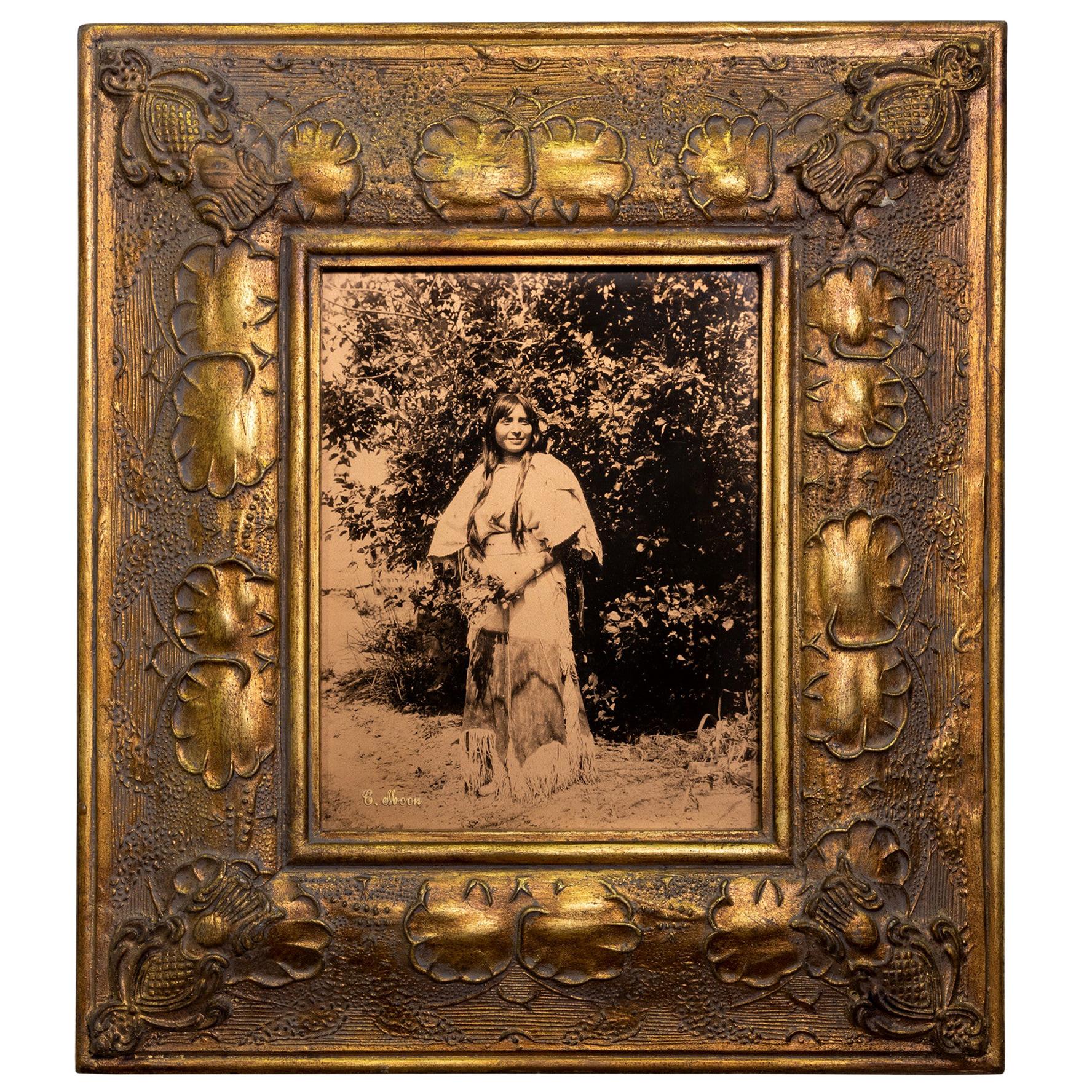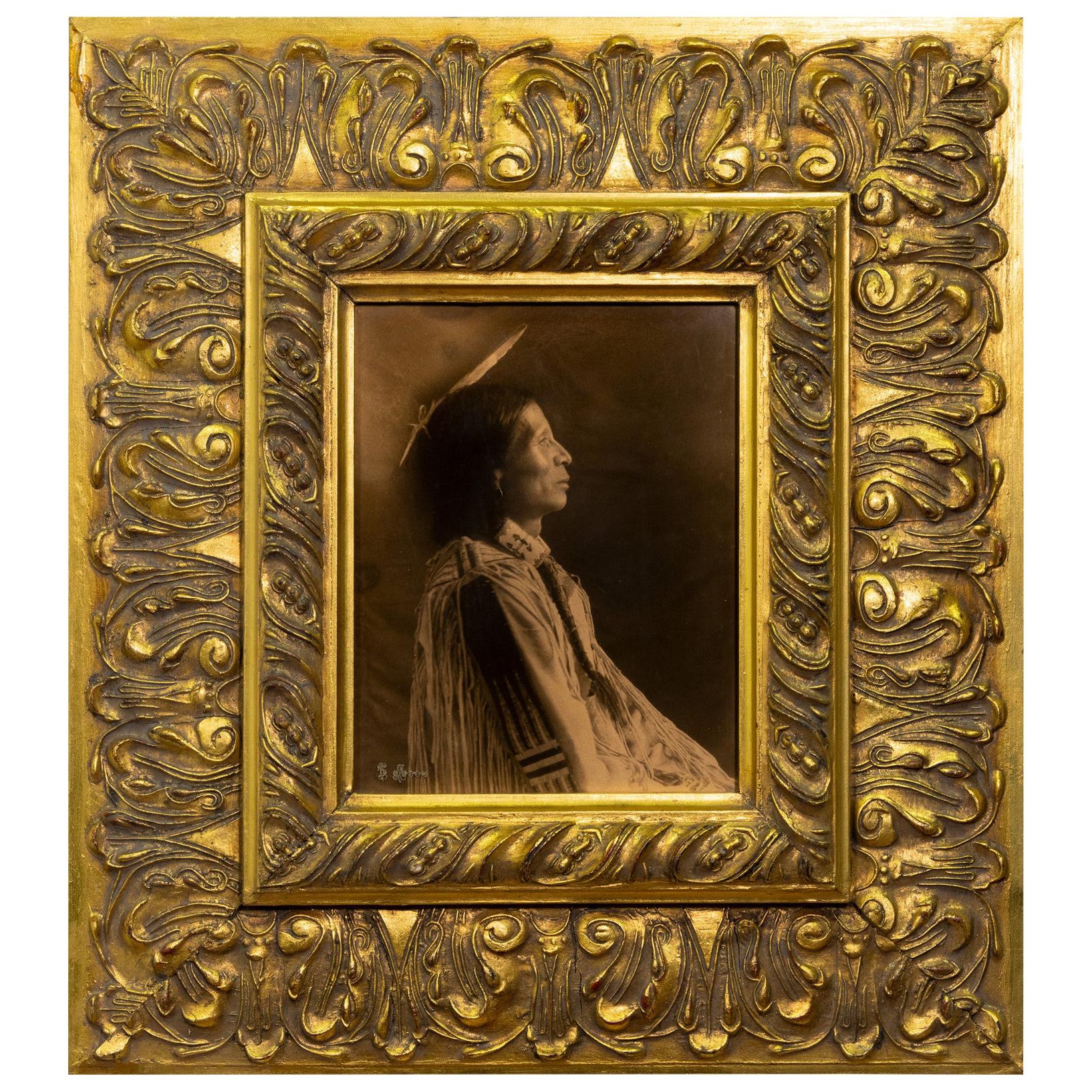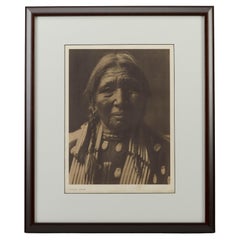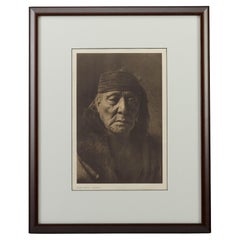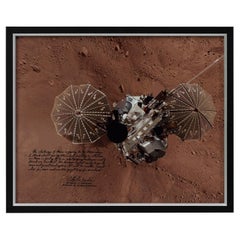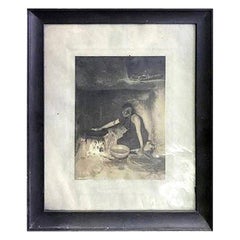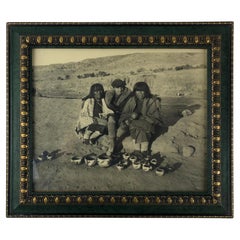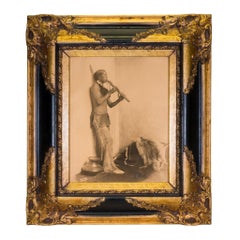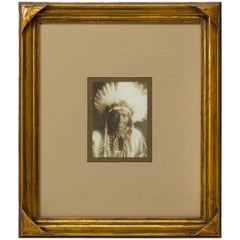
Edward S. Curtis Signed Photograph of Apsaroke Indian Chief
View Similar Items
Want more images or videos?
Request additional images or videos from the seller
1 of 5
Edward S. Curtis Signed Photograph of Apsaroke Indian Chief
Price:$12,500
$14,500List Price
About the Item
- Dimensions:Height: 25.5 in (64.77 cm)Width: 21 in (53.34 cm)Depth: 2 in (5.08 cm)
- Materials and Techniques:
- Place of Origin:
- Period:
- Date of Manufacture:1900-1930
- Condition:Wear consistent with age and use. Minor fading.
- Seller Location:Colorado Springs, CO
- Reference Number:Seller: AS45-C1stDibs: LU909712845392
About the Seller
4.9
Platinum Seller
Premium sellers with a 4.7+ rating and 24-hour response times
Established in 2010
1stDibs seller since 2011
462 sales on 1stDibs
Authenticity Guarantee
In the unlikely event there’s an issue with an item’s authenticity, contact us within 1 year for a full refund. DetailsMoney-Back Guarantee
If your item is not as described, is damaged in transit, or does not arrive, contact us within 7 days for a full refund. Details24-Hour Cancellation
You have a 24-hour grace period in which to reconsider your purchase, with no questions asked.Vetted Professional Sellers
Our world-class sellers must adhere to strict standards for service and quality, maintaining the integrity of our listings.Price-Match Guarantee
If you find that a seller listed the same item for a lower price elsewhere, we’ll match it.Trusted Global Delivery
Our best-in-class carrier network provides specialized shipping options worldwide, including custom delivery.More From This Seller
View All"Ogalala Woman" by Edward S. Curtis, 1908
By Edward S. Curtis, 1868-1952
Located in Colorado Springs, CO
Presented is a fine photogravure portrait of an Ogalala woman by Edward Curtis. The image is Plate 94 from Supplementary Portfolio 3 of Edward Curtis' epic project The North American Indian. The caption provided by Curtis for this image is “A face so strong that it is almost masculine, showing strikingly how slight may be the difference between the male and female physiognomy in some Primitive people.” The photograph was taken in 1907 and the photogravure was published in 1908 by John Andrew & Son, in Boston.
Edward S. Curtis created one of the most enduring and iconic visual records in the history of the photographic medium. He was an award-winning artist, a consummate craftsman, a visionary, an intrepid entrepreneur, and was highly regarded as a respected ethnographer and publisher.
Curtis began photographing Native Americans in the mid-1890s and selling these images in his successful Downtown Seattle studio. One of his earliest models was Princess Angeline, the aged daughter of chief Sealth, the Suquamish Indian after whom Seattle is named. At the National Photographic Convention of 1899 Curtis was awarded the grand prize for three of his soft-focused, sepia-toned images of Puget Sound Native Americans: Evening on the Sound, The Clam Digger, and The Mussel Gatherer.
Curtis spent the summer of 1900 with George Bird Grinnell observing the Sun Dance at an encampment of Blood, Blackfeet, and Algonquin in Montana. This was a pivotal experience for Curtis, confirming his desire to study and photograph the Native tribes of North America. A trip to visit the Hopi reservation in Arizona a few months later further fueled his enthusiasm. Curtis envisioned a plan to create a massive scholarly and artistic work that would document the tribes west of the Mississippi, their ceremonies, beliefs, daily life, and landscapes.
In 1906, Curtis approached railroad tycoon J.P. Morgan to request financial assistance for his project. Morgan agreed to pay him a total of $75,000, or $15,000 a year for five years. Morgan and Curtis decided that Curtis' masterwork, The North American Indian, would be a set of 20 volumes of ethnographic text illustrated with high quality photoengravings taken from his glass plate negatives. Each of these volumes would be accompanied by a portfolio of large Size images, all sumptuously bound in Moroccan leather. The papers used for printing would also be of the best quality: a Dutch etching stock by Van Gelder, a Japanese vellum, and for the most discerning subscribers, a translucent Japanese tissue paper. To fund publication, Curtis would sell subscriptions at approximately $3,000 per set, with a total of 500 sets to be published.
An ambitious and extensive project, Curtis spent much of his life documenting as many Native tribes as possible. The importance and the urgency of the task was clear to him, as he wrote in the introduction to his first volume of The North American Indians in 1907, "The information that is to be gathered . respecting the mode of life of one of the great races of mankind, must be collected at once or the opportunity will be lost." In 1930, some 24 years after his initial request for funding, the last two volumes, Vol. 19 and Vol. 20, were published and The North American Indian project was finally completed. Curtis took over 40,000 photographs and made over 10,000 wax cylinder...
Category
Antique Early 1900s American Photography
Materials
Paper
"Bear's Teeth - Arikara" by Edward S. Curtis, 1908
By Edward S. Curtis, 1868-1952
Located in Colorado Springs, CO
Presented is a fine photogravure portrait of Bear’s Teeth of the Arikara tribe by Edward Curtis. The image is Plate 154 from Supplementary Portfolio 5 of Edward Curtis' epic project The North American Indian. The caption, written by Curtis, for this image is as follows: “A member of the Night order of the medicine fraternity.” This photogravure was published in 1908 and was printed by John Andrew & Son, in Boston.
Edward S. Curtis created one of the most enduring and iconic visual records in the history of the photographic medium. He was an award-winning artist, a consummate craftsman, a visionary, an intrepid entrepreneur, and was highly regarded as a respected ethnographer and publisher.
Curtis began photographing Native Americans in the mid-1890s and selling these images in his successful downtown Seattle studio. One of his earliest models was Princess Angeline, the aged daughter of chief Sealth, the Suquamish Indian after whom Seattle is named. At the National Photographic Convention of 1899 Curtis was awarded the grand prize for three of his soft-focused, sepia-toned images of Puget Sound Native Americans: Evening on the Sound, The Clam Digger, and The Mussel Gatherer.
Curtis spent the summer of 1900 with George Bird Grinnell observing the Sun Dance at an encampment of Blood, Blackfeet, and Algonquin in Montana. This was a pivotal experience for Curtis, confirming his desire to study and photograph the Native tribes of North America. A trip to visit the Hopi reservation in Arizona a few months later further fueled his enthusiasm. Curtis envisioned a plan to create a massive scholarly and artistic work that would document the tribes west of the Mississippi, their ceremonies, beliefs, daily life, and landscapes.
In 1906, Curtis approached railroad tycoon J.P. Morgan to request financial assistance for his project. Morgan agreed to pay him a total of $75,000, or $15,000 a year for five years. Morgan and Curtis decided that Curtis' masterwork, The North American Indian, would be a set of 20 volumes of ethnographic text illustrated with high quality photoengravings taken from his glass plate negatives. Each of these volumes would be accompanied by a portfolio of large size images, all sumptuously bound in Moroccan leather. The papers used for printing would also be of the best quality: a Dutch etching stock by Van Gelder, a Japanese vellum, and for the most discerning subscribers, a translucent Japanese tissue paper. To fund publication, Curtis would sell subscriptions at approximately $3,000 per set, with a total of 500 sets to be published.
An ambitious and extensive project, Curtis spent much of his life documenting as many Native tribes as possible. The importance and the urgency of the task was clear to him, as he wrote in the introduction to his first volume of The North American Indians in 1907, "The information that is to be gathered ... respecting the mode of life of one of the great races of mankind, must be collected at once or the opportunity will be lost." In 1930, some 24 years after his initial request for funding, the last two volumes, Vol. 19 and Vol. 20, were published and The North American Indian project was finally completed. Curtis took over 40,000 photographs and made over 10,000 wax...
Category
Antique Early 1900s American Photography
Materials
Paper
Charlie Duke Signed Photograph of Apollo 16 Moonwalk
Located in Colorado Springs, CO
Presented is an Apollo 16 mission photograph, signed and inscribed by Apollo 16 moonwalker Charlie Duke. The photograph shows Duke collecting lunar samples n...
Category
Vintage 1970s American Modern Photography
Materials
Paper
Charlie Duke Signed Photograph of the Phoenix Lander on Mars
Located in Colorado Springs, CO
Presented is a photograph of the Phoenix Lander on Mars, signed and inscribed by Apollo 16 moonwalker Charlie Duke. In the inscription, Duke shares his thoug...
Category
Early 2000s American Historical Memorabilia
Materials
Paper
Solheim Cup Matches U.S. & European Team Signed Photo & Flag, 2009
Located in Colorado Springs, CO
Presented is an autographed collage celebrating the women golfers of the 2009 Solheim Cup U.S. and European teams. The 11th Solheim Cup Matches were held Au...
Category
Early 2000s American Sports Equipment and Memorabilia
Materials
Fabric, Paper
Vintage Garden of the Gods Postcards by Hook Photo, 1890
Located in Colorado Springs, CO
Presented is a collage of three vintage cabinet card photographs of the Garden of the Gods, in Colorado dating to the 1890s. The sepia toned photo...
Category
Antique 1890s American Photography
Materials
Paper
You May Also Like
Edward S. Curtis Original Signed and Stamped Silver Toned Platinum Print, 1906
By Edward S. Curtis, 1868-1952
Located in Studio City, CA
An original platinum print on textured paper by iconic American photographer Edward Curtis titled "The Piki Maker"
The print is hand-signed in ink, blind-stamped with Curtis' embos...
Category
Antique Early 1900s American Native American Photography
Materials
Paper
Edward S Curtis (1868-1952) Shot in The Hand - Apsaroke, 1908
By Edward S. Curtis, 1868-1952
Located in CA, CA
Edward S Curtis (1868-1952)
Title: Shot in The Hand - Apsaroke
Plate: 133
Portfolio: Volume IV
Printer: John Andrew & Son
Medium: Photogravure
Date: 1908
Dimensions:
Sheet: W 15 5/...
Category
Antique Early 1900s American American Classical Photography
Materials
Paper
Historical B/W Photograph of Native American Navajo Pottery Makers
Located in Miami, FL
A Window into History: 1922 Portrait by Odile Bouligny
This captivating black and white photograph, captured in 1922 by renowned French photographer Odile Bouligny, offers a glimpse into a bygone era. The image portrays a mother and daughter, both Navajo pottery...
Category
Early 20th Century American Art Deco Native American Objects
Materials
Paper
$2,900 Sale Price
41% Off
"the Love Song" Gold Tone Photograph by Carl Moon
By Carl Moon
Located in Coeur d'Alene, ID
"The Love Song" gold tone photograph by Carl Moon - signed gold tone; 8" x 10". Taos - 1914 - the Indian's name is Geronimo Gomez. Published in "In Se...
Category
Vintage 1910s Photography
Materials
Other
Jim Little Feather Gold Tone Photograph by Carl Moon
By Carl Moon
Located in Coeur d'Alene, ID
By Carl Moon - signed Goldtone; 9"x12" Taos - 1914. also titled "Pueblo Belle"; published in "In Search of the Wild Indian" by Tom Friebe, page 115. This piece is in the original fra...
Category
Vintage 1910s Photography
Materials
Other
"Koy-Yahwa'mah" Gold Tone Photograph by Carl Moon
By Carl Moon
Located in Coeur d'Alene, ID
By Carl Moon signed gold tone; the woman is Maria Marcos, 1914. Published in "In Search of the Wild Indian" by Tom Driebe (Original frame), page 162. A copy of the book comes with.
...
Category
Vintage 1910s Photography
Materials
Other
